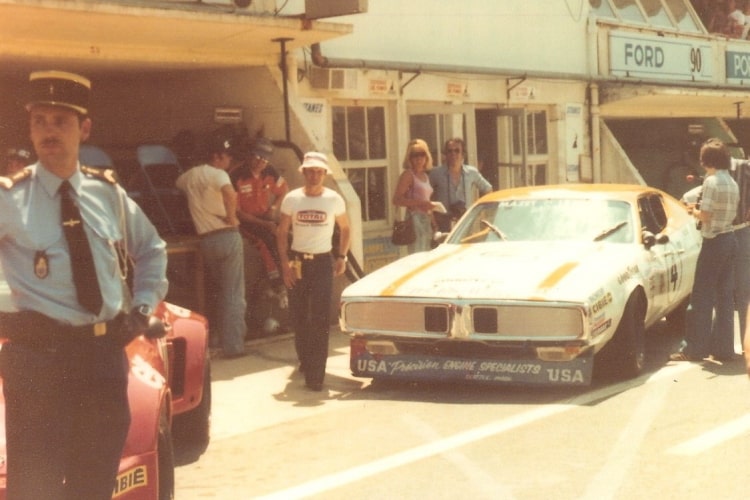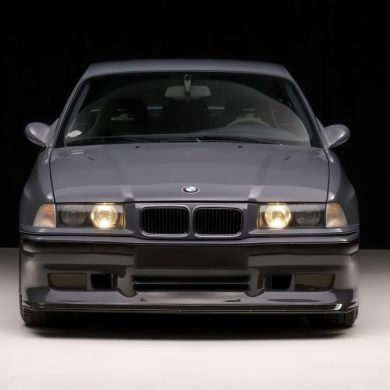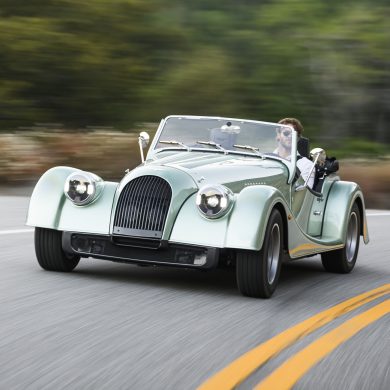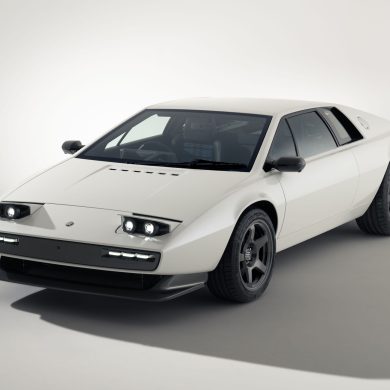Having American cars race at world stage endurance races isn’t novel or unique. Before the all-conquering Ford GTs, American cars at Le Mans included Cadillacs, a mixture of Corvettes and Mustangs, the odd Camaro, and Panoz.
2021 marks the 20th anniversary of the unfortunate loss of ‘The Intimidator,’ Dale Earnhardt, Sr., who himself was a competent road racer.
We take a moment to recall that back in 1976, a pair of unlikely Yankee racers (the cars and the people) ventured into a run at the 24 Hours of Le Mans with 3800 lb NASCAR stockers.
Among them were Washington States father and son team Herschel and Doug McGriff.
Doug McGriff had proven his success as an endurance road racer by obtaining victory in the 1950 Carrera Panamericana Mexican road race and many road races at Riverside International Raceway.
The now 93-year-old McGriff was principally a Chevy pilot in the NASCAR ranks in the 1970s, but considered the Dodge Charger’s conceivably slipperier profile would be greater suited to Le Mans’ many high-speed areas.
In a Charger that son Doug already owned, they built it up, using a big-block Chrysler V-8 (either a 440 or a 426 “Wedge,” exactly which is uncertain) mated with the usual 4-speed manual transmission.
They attached exterior rearview mirrors at the scrutineers and other competitors’ request in addition to all kinds of head- and taillights for racing through the night. Sponsored by Olympia Brewing Company and painted white and gold, the McGriffs were destined for Le Mans.
The other NASCAR competitor was an equally enormous Ford Torino. The Torino was entered by perennial independent Juney Donlavey and shared by drivers Dick Hutcherson and Richard Brooks. The Le Mans race organizers paid the expenses for the NASCAR transportation and the teams.

Despite being in unknown territory, both vehicles were well-adapted, and given the inclusion of the lighting, mirrors, and windscreen wipers, passed scrutineering straightforwardly.
The French media affectionately named the Ford Torino and the Charger ‘Les Deux Monstres‘ – the Two Monsters.
The cars and teams were popular amongst the locals. Both owner/driver Donlavey and McGriff often remarking how the cars were continuously inundated by fans, who embraced and applauded their thundering V-8s.
Sadly, the promise proved more powerful than the outcome. McGriff noted that it was intriguing to compare the cars – the big Yanks would “blow past all the Porsches and other GT production class machines on the straights, and then the smaller cars would come buzzing by us in the corners.”
McGriff Dodge was, unfortunately, the race’s initial failure in the contest’s first hour after two laps. The team had produced lower compression engines calibrated to 90 octane fuel. However, the gas used was more like 82/83 Octane, and the car developed an oil leak from a blown engine.
The Donlavey Ford fared somewhat better, unsurprising being one of the fastest cars on the Mulsanne Straight. It did, however, finally gave up in the 11th hour after 104 laps with transmission failure.
1976 would end up being the single and only year of the NASCAR/Le Mans attempt.
It’s sad that Earnhardt, Sr., never raced at Le Mans, although he exhibited his road course and endurance racing courage at the 24 Hours of Daytona in a factory Corvette, the car that would dominate the GT ranks at Le Mans for many years.
We can only imagine what could have been if The Intimidator lived past February 2001 and maintained long-haul racing with the Corvette team; the results could have been historic.











Great story Mat
Do you know what engine the Ford ran……..? 358 cid Clevelands were getting popular by then, but 429 (Ford) Hemis readily available too.
Interesting story. Directly behind the Ford in the photo is one of the BMW 3.0 CSL’s which I saw at Daytona 24hrs in 1975. Was at LeMans in ’78. May have been Corvettes there possibly but I don’t remember them. Renault Alpine V6 turbo won the race.
Love these historical perspectives, Matt. Hershel McGriff was NASCAR’s Iron Man. Born in 1927, he was just 23 when he won the first Carrera Panamericana in his Olds 88. It vaulted him into NASCAR, where he went on to a 20-year career in the Winston West series, finally becoming Series Champion in 1986, at age 58. He was the only driver ever to compete in seven decades of NASCAR.
That ’50 Olds was pretty much box stock except for bigger wheels and brakes, but it did have a name, “The Rose of Portland.” McGriff ran a lumber business in the hamlet of Bridal Veil, Oregon, and Portland is known as the Rose City. The car was painted in a cream color, with red roses vining down the flanks, and the salutation, “Una rose en Portland crece para tu” (a rose in Portland grows for you).
Correction: “En Portland crese una rosa para usted,” according to the photograph I unearthed.
Comparing NACAR cars to race cars is quite far fetched in my opinion,. These overweight and oversized cars are made for show, not race.
Well that’s sort of a silly statement. I mean, they are actually “race cars,” in as far as they compete in races. They’re just race cars that aren’t particularly fast through tight corners. So, yeah, maybe the wrong type of race car for LeMans. Still think it’s kinda cool that they tried. What was the harm? Apparently the locals got a kick out of it, too.
Let me guess you have never been to a NASCAR ( not real race car) event. They do actually turn left and right. And frankly their simplistic design is actually closer to a classic race car than all of the electronic ridden sequential shifting techno boxes in most forms of racing today. And they are fast. So fast in fact that they have to limit engine horsepower on the big tracks. These things were going over 212 miles an hour back in 1988 when they had to be reeled in. I’m going to guess France. Let me see. They have been trying to change the rules for years to favor the French teams. Can we say Matra in the 70’s. Still sore and ignorant about anything American. It’s too bad you have this holier than thou mentality to not accept a race car that was not born in France. It’s too bad too I adored an actress by the same last name.
you can race anything. I prefer racing cars which were built for normal driving
Yep that’s a pretty silly statement.
Being a Brit I had no big love or understanding of the appeal of NASCAR, but when I lived stateside I did attend a few NASCAR races and to see those cars coming through a turn at full tilt, all within a nats hair of each other and all of them ‘twitching’ and ‘bobbing’ , being so obviously at the limit of their controlability was really a sight worth seeing. Coupled with the length of some of those races it changed my perspective on that form of motorsport and I have a great deal of respect for the cars and the drivers. Sure it’s not European road or circuit racing but it is equally thrilling to watch in person, even more so at the short tracks.
I for one would have loved to see a Charger and Torino running at LeMans, the sound alone would have been worth it. It what motor sport used to be able to about, showing up with a car and having a go.
As a fellow Brit who has been to around 10 or so Daytona 500’s I wholeheartedly concur with your post. The sight of 20 or more cars in a draft is an awe inspiring experience. In earlier days – my first visit was in 1980 when I believe if memory serves Buddy Baker won – when you could stand right up against the wall and fence the blast and pressure you felt as the pack passed brought a lump to the throat. It was almost beyond comprehension how close the guys ran to each other. I can feel the pain of someone who came, say second, when that position was a bonnet (hood) behind the winner. I’ve not for various reasons not least of all Covid been able to get to the States for four years but am eagerly looking forward to me next Nascar race. Back when there was a racetrack at Disney I booked a three lap ride in a car and in chatting to the driver I mentioned that I raced back in UK. Ok he said I’ll give you a good run. To be frank I did not find the speed through the turns that exciting – there seemed to be a lot of trailing throttle – but quite how I didn’t mess my trousers (pants) when we pulled out of the pits at full throttle and aimed at what appeared to be a brick wall of banking straight ahead is still a mystery to this day! Fortunately at what seems like too late the guy turned and we were actually on the banking and not slammed into it.
I attended and had a press/photo pass for the 1982 edition of the 24 Hour of Lemans and both Hershel McGriff and Dick Brooks drove Camaro stock cars owned by Billy Hagan. I chatted with both drivers and learned that Hershel’s son had a suspension failure in his racing kart…I believe at Pacific Raceways, breaking both legs. Obviously Hershel was extremely concerned. I can attest that the fans LOVED hearing the big, thumping V8’s. While I believe both cars were running at the finish many laps down, one was and one was not classified as a finisher.
Seeing that Big Nascar reminded me of the Peter Auto Le Mans Historics at Le Mans 2014.
We were Team Brunn, Dr Siggi Brunn and Team, out of Eberbach Germany running two Sauber C5 Sportscars with BMW M12’s,for Phillipe and his Brother, Yves Scemama, (Now with a 962),and the Porsche is likely the ex Georg Loos 1974 Porsche RSR driven by Jochen Mass, Brian Johnson and I think Dave Rix (USA?) owned by George Tauma .
That is possibly the dark red Porsche in the Photograph.
The main point I’d like to make is that in the Pit alongside us in 2014 was a “newbie”,a new Racer, Christian Schwartz of a near to Le Mans Village,Eccomoy (?) who owned the White & Gold Nascar.
I could see he was having trouble putting on his Race Numbers,which was on a dry surface,so badly wrinkled. I made a couple of suggestions,and used some of our spray and an Amex Card,and helped him put the Numbers on square & wrinklefree. Lovely guy, he said “Come to my place,we’re having a drink at 7pm?” I went, It is a fabulous French Chateau,with a Moat,Swans,etc.” Christophe said “Where are you from?” I said Australia. He said, “I only know one Australian”
I said try me, there’s only 28 Million of us. Christophe said, “Geoff Burgess, he’s staying at the Chateau”.
I said, “I know Geoff well, he bought my Group Nc Alfa 1750 GTV Race Car last year!”
Small World Gentlemen, and I can’t wait to get back to Germany after COVID19 is past…..
There really is nowhere like Le Mans I went for over 30 years from 1970 on but it is hard work as the years roll on and like racetracks worldwide safety precautions take you further and further away from the action so just as well watch on tv.